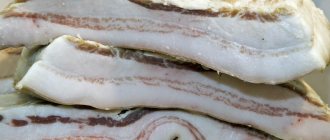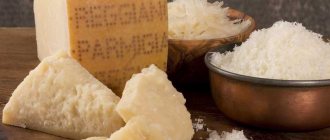Almonds are a popular nut with a pleasant taste and light aroma. It contains many useful substances, valuable fats and is widely used in cooking. It is eaten without pre-processing and used as an addition to salads, main courses and desserts. They even make flour from it, which is an excellent substitute for wheat.
Almonds are not cheap, so it is important to know how to store them at home in peeled and unpeeled form so that they do not spoil ahead of time.
Storing Unshelled Almonds
More practical housewives buy unshelled nuts if they plan to store them.
This product is less susceptible to environmental influences, which allows it to stay fresh longer. The storage conditions for unpeeled almonds should be as follows:
- temperature - +16°С -+18°С;
- humidity – up to 75%.
Increased temperature and humidity in the storage area will lead to the product acquiring a rancid taste and traces of mold. Therefore, optimal storage conditions will be cool places with moderate humidity levels.
Air access to the nuts must be constant to avoid the appearance of a musty smell and mold. Therefore, the box or other container in which they are located should not be tightly closed.
Unshelled almonds can also be stored in glass containers, as long as they are not sealed tightly.
The container with nuts should be kept away from bright light, even though they are in shells. Almonds should not be exposed to sunlight.
The shelf life of unshelled almonds is 12 months. Trying to save it longer makes no sense. By this time, the product partially loses its original quality and unique taste. Therefore, it would be better to purchase fresh nuts.
How to tell if almonds have gone bad
Here are the signs of almond spoilage:
- Mold formation. Appears as dark spots.
- Decay.
- The appearance of a slimy, unpleasant coating on the surface.
- Rancid smell and taste. This usually happens when the almonds are too old. Fats can become bitter if stored too long.
- Excessive drying. The nuts become too hard and brittle.
- Traces of insects on the surface.
Rotten almonds should not be eaten, especially if they contain mold, insect droppings or rot. Missing nuts can harbor germs and toxins, which can lead to poisoning and other health risks.
Preparation for storage
Almonds do not require special preparation for storage. All you need to do is go through them, eliminating all damaged and low-quality specimens, as well as foreign impurities.
Despite the fact that shelled almonds are stored longer, some housewives prefer to clear part of their stock in advance. After all, it is in this form that the product is easier to use for cooking.
The hard shell is opened using a nut cracker or a small hammer.
It is important to use the tool carefully so as not to damage the core
You can peel the brown film from almonds in different ways. One option is to pour boiling water over the nuts. After this, the film will easily separate from the core.
Raw almonds last longer than roasted almonds. Some housewives still dry it.
Recipes Using Blanched Almonds
Try adding chopped almonds to yogurt with fruit or honey, chicken salad or broccoli and feta salad, or cooked green beans. Or use them to make Spanish Roasted Almonds, perfect for snacking. They can be fried in a frying pan or in the microwave, and can be eaten hot or cold. Of course, blanched almonds often find a place on lists of dessert ingredients, such as Polish almond flour cookies and others.
Discover more delicious recipes in our almond collection
Almonds: storage
Storing almonds in a jar
Regular consumption of almonds helps improve skin condition. In addition, it is acquired due to its excellent taste and pleasant aroma, so care should be taken to properly store the nuts.
- Peeled nuts should be stored at a temperature of 16-18 degrees.
- Humidity levels should not be more than 70%.
- Almonds can be stored in a vacuum container for about 6 months.
- Peeled almonds are poured into a glass container and lowered into the basement or cellar.
Almonds are good for the cardiovascular system, improve brain function and prevent the occurrence of Alzheimer's syndrome. We must not forget about strengthening the nervous system and getting rid of seasonal depression! Almonds are beneficial for people with diabetes by protecting the body from the intake of large amounts of glucose. The abundance of dietary fiber helps to “cleanse” the body of toxins and improves intestinal function.
How to store green almonds
Preserving green nuts at home follows the same rules as peeled nuts. You should not mix this product with other types of nuts: the released oils will spoil the taste of the entire mixture and the shelf life will be significantly reduced. The best way to prepare green kernels at home is to freeze them, but before doing this, the product must be thoroughly dried. In addition, the type of container does not matter when freezing.
If the almonds have a pungent, bitter odor, further storage is unsafe. The product cannot be revived. In this case, you should throw it away immediately. The same fate awaits a product covered with mold and insects: the appearance may be washed off, but the bacteria will remain. It is recommended to immediately transfer nuts from opened plastic packaging to another package, otherwise they will quickly deteriorate and... in the trash. How you store almonds determines how much benefit they will bring. Almonds are a storehouse of a huge amount of substances necessary for humans. To summarize, we can summarize the conditions for storing kernels in a home environment: a cool, dry place, without a direct light source, with sufficient ventilation.
Was this article helpful?
Thank you for your opinion!
You can recommend this article to your friends!
Already helped 8 times
How to store dried fruits and nuts?
It is recommended to store nuts and dried fruits in jars, paper, fabric or plastic bags. Bags or containers for storing food should not be open or have gaps. Insects, from beetles to caterpillars, love dried fruits.
Interesting materials:
What qualities are needed to achieve success? What qualities does bullet shooting develop in a person? What stones are best for a steam room? What channels does Megogo show? What channels are included in analog TV? Which paintings are the most expensive? What categories of citizens are exempt from paying property taxes? What characteristics of the target audience are considered social? What churches are located in Moscow? What kind of Christians are Armenians?
Storing Shelled Almonds
It is recommended to store peeled young almonds in a brown shell (film). Clean it immediately before use. It also protects the product from oxidation, extending its shelf life.
There are several ways to store peeled almond kernels. Each of them has its own nuances.
At room temperature
Young almonds have the shortest shelf life at room temperature. It quickly becomes saturated with moisture, acquires a rancid taste and loses its aroma.
To minimize environmental impact and extend the shelf life of the product, it is placed in the pantry or on the bottom shelf of the kitchen unit.
Kernels are stored longest in vacuum packaging. Often nuts are sold in this form. There are special forms, as well as vacuum sealers for independent use at home.
If you bought almonds by weight and there is no way to vacuum them at home, the nuts are placed in a clean, dry jar, which is hermetically sealed. It is not recommended to put almonds in metal cans, which accelerate their oxidation.
In a refrigerator
Almonds are best stored in the refrigerator. There the temperature is low, which allows you to extend the shelf life.
There are other products in the refrigerator compartment. If stored improperly, their odors mix, which negatively affects the taste. To prevent this from happening, the almonds are placed in the vegetable drawer. It is pre-packed in a plastic bag or plastic tray. Unpeeled vegetables and fruits are placed nearby, but not garlic and onions.
Water often accumulates in vegetable drawers
It is important to protect the nuts from liquids. If moisture does penetrate under the packaging, the almond kernels will have to be eaten within 1-2 days
Otherwise, they will become unfit for consumption.
Note! Almonds should not be stored in the refrigerator if condensation runs down its walls and ends up in the vegetable drawers. If for some reason it is impossible to store nuts in the refrigerator, in winter they are placed on a glazed balcony
There they will lie no less
If for some reason storing nuts in the refrigerator is impossible, in winter they are placed on a glazed balcony. They will stay there no less.
In the freezer
Nuts last the longest in the freezer. At the same time, they do not lose their beneficial properties. Their taste also does not change significantly.
Almond kernels are placed in a bag or plastic tray and placed in the freezer. It is advisable that nuts, meat and fish are on different shelves.
Important! If almonds have been thawed, they cannot be re-frozen.
How and with what are young almonds processed for storage?
Many people are concerned about the question: should almonds intended for long-term storage be pre-washed with water? The answer is ambiguous. It is recommended to wash off any remaining dirt from the shell, but this increases the risk of moisture penetrating inside the nut, which will significantly shorten the shelf life of the product. It is important to remember that after this procedure the nuts must be thoroughly dried, but without exposing them to direct sunlight.
Advice
Some almond connoisseurs prefer to soak them in water before eating, which helps soften the hard texture of the fruit and facilitate digestion.
Accordingly, before leaving the nut to soak, it can be washed well. But it is better to carry out this procedure immediately before eating the kernels.
How to soak almonds
Soaking almonds is easy—and much cheaper than buying pre-soaked almonds from the store.
Here's an easy way to soak it overnight:
- Place almonds in a bowl, add enough warm, clean water to completely cover, and sprinkle with about 1 teaspoon salt for every 1 cup (140 grams) of nuts.
- Cover the bowl and let sit on the counter overnight or for 8 to 12 hours.
- Drain and rinse. You can also remove the skin for a smoother texture.
- Pat the almonds dry using a clean paper towel.
The soaked nuts can be eaten immediately.
You can also dry them in several ways:
- In the oven. Preheat the oven to 79°C and place the almonds on a baking sheet. Dry for 12-24 hours or until dry.
- In a dehydrator. Spread the soaked nuts in an even layer on one or two trays. Set dehydrator to 68°C and dry for 12 hours or until crisp.
It is best to store soaked almonds in an airtight container in the refrigerator.
Peeling almonds: method 1
Take a deep bowl and pour almonds into it. Then pour boiling water and leave to cool for 10 minutes, or just boil for no more than 1 minute. Then drain the hot water and pour cold water over the almonds for about 5 minutes. After this, press on the nut. If it easily pops out of the shell, then the trick was a success and you can start cleaning. Otherwise, repeat the procedure.
What is positive about this method (peeled almonds) is that:
- nut kernels practically do not break during peeling;
- high-quality cleaning.
What is negative about this method is that:
- the cleaning process takes a lot of time;
- nuts are processed one at a time.
After peeling, the nuts must be placed on a sheet or paper on a wire rack and placed in a warm oven (temperature up to approximately 80 degrees). Keep them there as long as they soak until completely dry (about 40 minutes). And only then fry in a frying pan or in the oven at temperatures up to 200 degrees.
Tips for storing almonds at home
To keep almonds longer, several nuances are taken into account:
- After opening the vacuum packaging, the kernels are transferred to a clean, dry container - a glass jar or plastic food tray. The container must be sealed tightly.
- Almond petals, as well as crushed kernels, have a shorter shelf life than whole nuts. Their shelf life is 2-4 weeks.
- Different nuts have different tastes and aroma. Moreover, they all contain a large amount of oil. If you store them together, the flavors will mix, so keep almonds separate from other nuts.
- Cleaned kernels should not be allowed to come into contact with other products, especially spices. Otherwise, they will become saturated with foreign aromas.
Do I need to add salt and why?
You can fry almonds with the addition of various ingredients - sugar, honey, spices, both spicy and hot. But you shouldn’t add salt when frying. This will not have any effect - in the end they will still remain fresh. To make a salty snack, you need to cook them with the addition of oil, preferably olive oil.
How and where to store almonds correctly?
Almonds are a type of nut with a high oil content. Because of this property, storing it at home is accompanied by many nuances. In addition, it is not recommended to mix almonds with other types of nuts. Otherwise, the oil that it will release will spoil the taste of the entire mixture and shorten its shelf life.
The nuances of storing almonds at home:
- almonds should be stored as far as possible from sunlight and light (these two factors significantly spoil the taste of nuts and affect the duration of their storage);
- do not store almonds in open containers or plastic bags (the result in this case will be a bitter taste, an unpleasant odor and the rapid appearance of mold);
- Almonds should be stored in glass jars or containers with lids;
- It is recommended to place containers with almonds in cool and maximally dark places;
- as soon as the almonds have a pungent odor, in which notes of bitterness are clearly noticeable, it can be considered that the nuts are spoiled and cannot be used for further storage (it is also not recommended to eat them);
- almonds can be frozen (this method has a number of advantages, since the risk of mold is eliminated and the shelf life increases);
- shelled almonds last longer than the shelled version (which is why it is recommended to buy unshelled almonds);
- cold extends the shelf life of almonds, so nuts can be stored in the refrigerator (you must use containers or any containers with lids);
- you can freeze almonds not only in containers, but also in plastic bags (in this case, packaging does not play a significant role);
- if almonds are purchased in a package, then after opening it the nuts must be transferred to a container (any packages spoil the taste of the nuts and shorten their shelf life);
- It is not recommended to store chopped almonds for a long time (even split kernels can shorten the shelf life of whole nuts);
- almonds, like most nuts, absorb odors well, so you should not store them near dishes and foods with rich aromas;
- if the almonds show signs of mold, other fungi or insects, then you need to get rid of the nuts and not eat them;
- mold and insects are not washed off with water (contamination can be removed, but bacteria quickly penetrate the kernels, making them dangerous to eat);
- Only dry almonds can be stored (moisture becomes the main cause of mold);
- Under no circumstances should almonds be stored at room temperature, exposed to sunlight or near heat sources (the higher the temperature and the more light that hits the kernels, the faster they will spoil);
- if you plan to store almonds in a glass jar or any other container, then you must check the dryness of its inner surface (the slightest moisture will spoil the nuts very quickly);
- The lower the temperature, the longer the almonds will last.
How long and at what temperature should you store almonds?
Frozen almonds can maintain their freshness for more than one year. These nuts can be stored in the refrigerator for up to 12 months. Sudden temperature changes and repeated frosts must be excluded.
At room temperature, almonds can be stored for several months. The main condition in this case is choosing the right storage location, which should be as cool and dark as possible.
If almonds are purchased in packaging, they can be stored for the period specified by the manufacturer. However, if the package has been opened, the storage period will depend on the conditions (refrigerator, freezer, room temperature).
https://dachamechty.ru/oreh/kak-hranit-mindal.htmlhttps://orehov.club/kak-hranit-mindal.htmlhttps://agronom.expert/posadka/sad/plodovye/kostochkovye/oreh/hranit- mindal-v-domashnih-usloviyah.htmlhttps://kakxranit.ru/produkti/kak-xranit-mindal.htmlhttps://foodinformer.ru/hranenie/orehi-hranenie/kak-i-gde-pravilno-hranit-mindal
How long do almonds last?
The shelf life of frozen almonds is 12 months or more. They can be stored in the refrigerator in the fruit drawer for up to a year.
Sudden temperature fluctuations do not affect the shelf life of the product. Repeated freezing should also be avoided.
Storage of almonds outside the refrigerator is limited to several months. Again, it is important to find as cool and dark a place as possible for the nuts.
Almonds can be stored in vacuum packaging for up to 6 months. However, it is better to follow the manufacturer's recommendations, which are always indicated on the product.
After opening the package, you can calculate the shelf life of the nuts based on the temperature and humidity level in the place where they are stored.
Maximum shelf life
The shelf life of almonds and their suitability for consumption directly depends on their type and storage conditions.
Almond puree (unpeeled almond kernels) can be stored without loss of organoleptic properties:
- In the refrigerator – up to 1 year;
- in the freezer – from 1.5 to 2 years;
- at room temperature up to 6 months.
Unpeeled fruits are more suitable for long-term storage: their core, depending on storage conditions and the integrity of the peel, is not exposed to the environment, which allows the product to remain fresh for as long as possible.
The approximate shelf life of raw almonds is
- at room temperature – 12 months;
- 1.5 – 2 years in the refrigerator;
- Up to 3 years in the freezer.
How long do almonds last in manufacturer's packaging?
If the almonds are packaged and wrapped, the expiration date is indicated by the manufacturer on the package. After opening the package, do not leave the caps unopened. It is best to transfer them to a container with a lid or a small cup that can be covered with film. After this, they can be placed in a cool, dark place or in the refrigerator. This allows you to keep almonds fresh and tasty for a long time.
Rotten almonds cannot be revived. If there is mold and rust on the kernels, and the taste is bitter, then the nuts have become poisonous. This product should not be consumed, and the nuts should simply be thrown away. Otherwise, they may cause poisoning or serious harm to your body. There's no need to take risks. It’s better to simply follow all the steps for storing almonds at home correctly so that you always have a supply of fresh and healthy nuts on hand.
How and with what are young almonds processed for storage?
Many people wonder whether it is necessary to pre-rinse almonds intended for long-term storage with water. The answer is not entirely clear. It is recommended to wash off dirt from the shell, but this increases the risk of moisture getting inside the nut, which significantly reduces the shelf life of the product. Please note that after this treatment, the nuts should be thoroughly dried, but without exposing them to direct sunlight.
Advice
Some almond lovers prefer to soak the almonds in water before eating, which helps soften the fruit's hard texture and makes it easier to digest.
Therefore, you can rinse the nuts well before leaving them to soak. However, it is best to do this immediately before consuming the seeds.
How to preserve peeled almonds for a long time
Almonds are known for their unique properties. They are used to strengthen hair, improve nail structure and restore tooth enamel. They contain vegetable fats that help protect the skin from premature aging and wilting. Almond oil helps restore skin firmness and elasticity. To enjoy all the beneficial substances, you need to know how to store almonds.
Hazelnuts can be sold both in shell and without it. It is best to take peeled almonds. They have a more pleasant taste, since due to the skin of the kernels they have a slightly bitter aftertaste.
Depending on your taste and future use, you can buy raw or roasted almonds. If they will be stored for a long time, it is better to choose nuts that have been processed at high temperatures. Thanks to this, they retain their beneficial properties and fresh appearance for a long time.
Shelled almonds can only be stored if the following rules are observed:
- Choosing the right location. Nuts are best stored in a cool, dark place. This may be in the refrigerator or pantry. It is most important to store almonds in a place where there is no direct sunlight.
- You can use a glass jar as a container. The most important thing is that the lid can be closed correctly. Vacuum bags can be used instead of glass jars. Store almonds in a tightly sealed container and away from strong-smelling foods. The kernels can absorb extraneous aromas, which can negatively affect the taste of the product.
- Almonds should be stored separately from other nuts. Never mix different varieties together. This will only worsen their quality and shorten the time of further use.
If shelled almonds will be stored for a long time, they should never be left in a plastic bag at room temperature. As a result, the nuts will acquire a bitter taste. The kernels will lose their beneficial properties. They will not have a high concentration of vitamins and nutrients beneficial to the human body.
If you follow all the rules and tips for storing almonds, they will have a pleasant taste for a long time. They retain all their beneficial properties for up to 6 months. If this is not enough and you need to extend the shelf life, you can put the nuts in a bag and store them in the freezer. Here almonds can be stored for up to 1 year, fully retaining their freshness and healing properties.
At room temperature
- Prepare the storage container: thoroughly wash, scald and dry the glass jar and its lid.
- Go through your purchased beans and remove any bad beans.
- Place the peeled almonds in the jar and close the lid tightly.
- Store the jar in the pantry or on the kitchen mezzanine, away from the radiator, window, faucet, oven and stove.
In a refrigerator
- Rinse the vacuum container or plastic box thoroughly and make sure the containers are dry.
- Carefully separate the spoiled grains.
- Place the nuts in a storage container, close it tightly, and place it in the fruit and vegetable drawer of the refrigerator.
In the freezer
- Wash the vacuum-sealed plastic container, plunge it into boiling water, and then dry it. You can also use a thick plastic bag.
- Place the cleaned and selected beans in a container or heavy-duty plastic bag, releasing the air and sealing it tightly.
- Place the almonds in the freezer.
Note!
Never freeze almonds in the freezer as the temperature difference will render them completely useless.
How to preserve almonds in shell for a long time
If you want to preserve the shelf life of your seeds for a long time, it is better to buy almonds in shells. Before doing this, carefully check them for mold, rust and other visual defects. Only whole, undamaged nuts can be stored for a long time.
There are several tips that will help you enjoy the freshness and pleasant taste of nuts longer. These include:
- In the place where almonds will be stored, air humidity should be maintained at no more than 70-75%;
- The temperature should be between 16 and 18 degrees Celsius. Nuts don't like heat. This makes them taste bitter, and mold may form on the shells;
- It is best to choose a container in which air can circulate freely. A good option is a glass jar with a loose lid. Placing the product in a plastic bag will prevent the evaporation of residual moisture, which will lead to rapid deterioration of the almonds;
- The container with nuts should be stored in a dark place. Almonds, even in the shell, do not like direct sunlight.
To enjoy your favorite seeds for a long time, you need to know how to properly store almonds at home. The most important thing is to choose a cool, dark place with good air circulation. It is best to buy almonds that were harvested this year. Last year's almonds will have a shorter shelf life. If done correctly, almonds will stay fresh all year round.
Storing Unshelled Almonds
More practical homeowners buy raw almonds if they are going to be stored. They are less susceptible to environmental influences, so they remain fresh longer.
Storage conditions for raw almonds should be as follows
- Temperature – from +16°C to +18°C;
- Humidity – up to 75%.
Increased temperature and humidity in storage will cause the product to acquire a rancid taste and traces of mold. Therefore, the best storage conditions are in a cool place with moderate humidity.
Nuts must have constant access to air to avoid musty odors and mold. Therefore, the box or other container in which they are stored should not be tightly closed.
It is also allowed to store raw almonds in glass containers, as long as they are not tightly sealed.
The container containing nuts should be kept away from strong light, even if it is closed. Never expose almonds to sunlight.
The shelf life of raw almonds is 12 months. There is no point in keeping them longer. By this time, the product has already partially lost its original quality and unique taste. Therefore, it is better to buy fresh almonds.
How to store green almonds?
Green almonds should be stored at home according to the same rules as shelled almonds. Do not mix this product with other types of nuts: the released oils will spoil the taste of the entire mixture, and the shelf life will be significantly reduced. The best way to store green beans at home is to freeze them, but before doing this, the product must be well dried. Also, the type of container does not matter when freezing.
If almonds have an astringent and bitter odor, further storage is dangerous. The product cannot be revived. In this case, it should be thrown away immediately. A product covered in mold and insects will suffer the same fate - it can be washed off the outside, but the bacteria will remain. Nuts in open plastic packaging should be immediately transferred to another package - otherwise they will quickly deteriorate and... quickly deteriorate and... end up in the trash.
How you store your almonds will determine how much benefit you will get from them. Almonds are a storehouse of a huge amount of substances necessary for humans. To summarize, we can summarize the conditions for storing seeds at home: not a hot, dry place, without a direct light source, with sufficient ventilation.
Storing Green Almonds
Green almonds are rarely found on store shelves. If you do manage to get your hands on them, it is important to store them properly.
Typically, young green almonds are stored in the refrigerator, preferably vacuum packed. If this is not possible, place the almonds in an airtight plastic container or plastic bag. Store food in vegetable drawers.
Some housewives freeze green almonds. Pre-pack them in a plastic bag or vacuum seal.
Important: There should not be a drop of liquid on the green nut shell. Otherwise, the product will mold and rot.
Basic rules and packaging
Before you buy a nut, you need to understand the basic principles of storing it. It is no secret that the surface of nuts is covered with a shell, which protects them from damage and other external factors. For this reason, many people believe that almonds can be stored in any conditions, but this is not true.
There are several recommendations that you should know about in advance:
- Maintaining optimal temperature. When canning all types of nuts, it is important to pay attention to temperature. It is recommended to maintain the air temperature at 10-15 degrees. Almonds should not be stored at temperatures above 17-20 degrees, as in such conditions they quickly deteriorate.
- Adjust the lighting. Nuts are best stored in shaded areas. They should never be exposed to sunlight as this will shorten their shelf life.
- Maintain air humidity. Fruits do not store well if the air humidity is too high. For this reason, the humidity level should not be higher than 70-80%.
It is best to use storage containers:
- Clay vessels;
- glass jars;
- wooden boxes.
Some people use plastic bags, but it's best not to store almonds in them for too long as they will start to wilt.
Optimal conditions
A necessary condition for extending the shelf life of almonds is compliance with recommended storage standards.
Basic parameters for successful storage of any food product, including almonds
- temperature control;
- humidity level in the air;
- Warehouse lighting.
- The permissible thermometer readings in the room where fruit is stored should not exceed +16°C – +18°C. The best option among rooms in a house or apartment for storing walnuts is a cool pantry, a flat corridor without a radiator, and an insulated balcony in winter.
- The optimal humidity level is 75%. Do not place the container of nuts near the faucet, near the oven, or in the bathroom.
- The container with the cap should not be exposed to direct sunlight. It is best to place the lids in a closed mezzanine or kitchen shelving unit on the bottom shelf and in a shaded area.
- Another important condition is free access of air to raw nuts, so the housewife must make sure that the container intended for storing the product is ventilated or not closed too tightly.
Failure to observe these precautions will result in product damage:
- the kernels will acquire a rancid taste;
- they will dry out due to high temperatures;
- They become moldy due to excess moisture in the air.
Selection of capacity
The ideal solution is to place the peeled fruit in a special plastic container with a vacuum function, which will provide the right conditions for the product.
However, most often a glass jar with a lid is used, which has been thoroughly washed and sterilized. For shelled almonds, it is best to choose a container that does not obstruct air circulation:
- fabric bag;
- cardboard box;
- box with vines.
Attention!
If a simple glass jar is chosen as a storage container, it is necessary to ensure a dosed supply of oxygen to the product. Do not remove the lid from the jar at all times.
On the other hand, a plastic bag is not suitable for storing nuts at room temperature. This will create a “greenhouse effect” inside, as a result of which the grains, peeled or not, will become bitter, moldy and quickly lose their beneficial properties.
Every 2 months it is recommended to carry out an “audit”, i.e. check the stored product and remove unsuitable grains.
Acceptable proximity to other products
Almonds are very sensitive to strong odors. They are like a sponge and can absorb any strong smell, so it is not recommended to leave them in the same place with strong-smelling products, as this will affect their organoleptic properties.
Almonds should be stored separately from other seeds, especially Brazil nuts and peanuts. Because these seeds contain high amounts of moisture and oil, they shorten the shelf life of almonds and affect their flavor.
Almond oil
Almond oil is extracted from almonds and has a rich taste and beneficial properties. It is used in medicine, cosmetics and cooking. It is often used to improve the condition of skin, nails and hair. It is used for various diseases of the digestive tract. It is also used as a salad dressing.
The product is stored for a relatively short time. Stored in a closed container, it retains its properties until the expiration date specified by the manufacturer. After opening the package, the shelf life is reduced several times due to contact with air. Therefore, the bottle should always be kept closed. If possible, use a dark glass container.
Almond oil should be stored in the refrigerator in a tightly closed bottle. If the original packaging is made of plastic, then after opening it is better to pour the liquid into a glass bottle or jar. It is not recommended to buy large quantities as they will spoil quickly.
How to dry nuts
Drying nuts at home is the safest way to store them: you know exactly when and where they can be stored. Beans can be dried in a variety of ways, from drying on a radiator to roasting in the oven or over charcoal. Due to their high fat and protein content, almonds can not only be dried, but also fried.
There are two general rules for temperature control:
- Fry the shelled nuts at 120 °C;
- Dry the peeled kernels at 90 °C.
Roast the peeled almonds in a frying pan for 3 – 5 minutes or for 5 – 6 hours. Kiln drying occurs after the wood has burned through. A sieve with kernels is placed on hot bricks, the damper is opened: the kernels are collected simultaneously on coals and in the open air.
How to store peeled almonds
Seeds that have not been treated with high temperature are the best choice. The amount of vitamin A and group B in the content of green almonds is much greater than in those fried over high heat.
Correct storage conditions, how long you can store:
- cool, dry, dark place with good ventilation - up to 6 months;
- vacuum packaging, sealed polyethylene, tightly closed jars - up to 6 months, after - according to the manufacturer’s terms (written on the packaging);
- in the refrigerator compartment in the vegetable department - up to 12 months;
- frozen - 1–2 years;
- crushed nuts and almond flour from the kernels are stored for up to 2 months.
It is correct to buy kernels of the same shape, same harvest and batch. You cannot store the product without packaging, in an open form - after a couple of weeks it will become rancid.
How to grind nuts into flour?
If you decide to grind nuts in a coffee grinder, add them in small batches and turn on the grinder for no more than 20 seconds, otherwise the blades will overheat, the nuts will release oil and stick together. Shake the coffee grinder periodically to prevent the nut flour from sticking to the walls and blades.
Interesting materials:
Where do the subtropics begin in Russia? Where are coniferous forests located in Russia? Where is the White Sea in Russia? Where is the main oil production area in Russia? Where is the US-Russian border? Where is the leper colony located in Russia? Where are the largest gas and oil fields in Russia? Where is the settlement Stolbishte in Russia? Where is the largest school in Russia? Where is the tallest Christmas tree in Russia?
Storing shelled nuts
Nuts without shells are sold raw and roasted. But when choosing a product for long-term storage, you should choose almonds that have not been processed at high temperatures.
The best way to store peeled almonds is:
- in a cool closet,
- in a closed kitchen cabinet on the bottom shelf
- in winter - in a cabinet on an insulated balcony.
The most suitable container for storage is considered to be a special vacuum container that ensures normal conditions for keeping the product. But you can also use a glass jar, which should be tightly closed.
At room temperature, in a closed plastic bag, the shelf life of peeled almonds will be short. The product will quickly lose its unique taste (become rancid) and beneficial qualities.
Shelled almonds can be stored for up to 6 months at low temperatures, but they can also be frozen.
You can store peeled almonds in the freezer for up to 1 year if you place them in a sealed bag. At the same time, the nuts will not lose their taste and beneficial properties.
What else can you do?
Other ways to process almonds besides washing:
- boil for several minutes;
- Blanching: placing in boiling water for a short period of time;
- Soaking in water at room temperature for several hours.
Temperature treatment makes it possible to clean almonds as much as possible from contaminants and pathogens, as well as chemicals that are used to treat raw materials before sale.
Almond kernels have a brownish tint, making it difficult to notice dirt on its surface.
Important!
Even if the product looks absolutely clean, it must be washed - small particles of dust and pathogens are not visible to the human eye.
Dirty nuts can cause:
- poisoning;
- eating disorder;
- infection with a parasitic infection.
Washing kernels not only ensures their complete safety, but also extends the shelf life of the product at home.
How to dry nuts
Drying nuts at home is the safest method of harvesting: you know for sure the time and place of preservation. You can dry kernels in a wide variety of ways: from drying on a radiator to cooking in the oven and on coals. Due to their high fat and protein content, almonds can not only be dried, but also fried.
Did you know? Almonds can be bitter or sweet. The first contains toxic substances and is used in medicine and cosmetology after special treatment. The second one is used in cooking.
There are two general rules for temperature conditions:
- the nut in its shell is harvested at a temperature of 120°C;
- It is necessary to dry the peeled kernels at 90°C.
Fry peeled almonds in a frying pan for 3-5 minutes, and for a food processor it will take 5-6 hours. Drying in the oven occurs after the wood has completely burned out. A sieve with kernels is placed on hot bricks, the damper is opened: they are prepared in the heat and open air at the same time.
How to peel a coconut
Sometimes you want to pamper yourself with something exotic and mentally go to distant islands, where there is summer, sun, palm trees and white sand. Coconut will help you feel like the hero of an advertisement for a Bounty bar. But how difficult it is to get to its contents!
Cracking a coconut seems difficult only at first glance. You will need a sharp knife with a narrow blade or a regular screwdriver, a hammer and a little of your time.
First, a liquid is “extracted” from the inside, which is often called coconut milk. They do this as follows:
- First, find the “eyes” on the nut. There are only three of them - two small and one slightly larger.
- Using a knife or screwdriver, punch a hole in the largest “eye” (it is softer than the others).
- Then turn the nut over the container and pour out the liquid.
You can drink coconut milk straight from the nut through a straw!
How to split a coconut into two halves:
- Take a coconut in one hand and a hammer in the other.
- Start tapping the nut in a circle (draw a line down the middle of the coconut with a knife).
- Knock until cracks appear.
- Divide the nut in two with your hands.
- Remove the pulp using a knife.
Instead of a hammer, you can use a large kitchen knife. The blows are applied with the blunt side of the blade. Then they take out the pulp with the same knife, making cuts in it and moving the blade away from the hard shell.
The coconut can be broken into two parts using a kitchen knife.
Methods for storing nuts
Their taste and shelf life depend on how nuts are stored.
Is it possible to store different nuts together?
Nuts are characterized by strong absorption of odors, so it is not recommended to store different types together. Each type of nut has its own moisture and oil content. And if you place nuts with a low moisture content and those with a high moisture content side by side, the former will quickly become moldy.
What is best to store in: choosing a container
It is better to place nuts in the shell in a box or in a cloth bag so that air can circulate and the nut kernel does not mold due to moisture.
But peeled ones are best stored in a tightly closed glass or plastic container.
Acceptable proximity to other products
Almonds are very sensitive to strong odors . It, like a sponge, is able to absorb any pungent aroma, so it is not recommended to leave it with strong-smelling products, otherwise it will negatively affect the organoleptic properties of the kernels.
Almonds should also be stored separately from other types of kernels, especially Brazil nuts and peanuts. Containing a high percentage of moisture and oil, these fruits will shorten the shelf life of almonds, while worsening their taste characteristics.
How to store unshelled almonds
The product in the peel is stored longer, is less demanding, and retains its beneficial and taste properties well.
However, it also requires attention:
- For storage, choose well-dried fruits, undamaged, without moldy or rusty manifestations;
- the ideal storage packaging is breathable: a box, a loosely closed jar, a paper or fabric bag;
- dark, cool, dry place;
- optimal air humidity - up to 70%;
- when the temperature of the product decreases, the shelf life increases: from -15 to 0 degrees - 5 years, from 0 to +20 - 2 years.
A fresh, unrefined product purchased during the season significantly saves your budget, so it is profitable to make homemade preparations yourself. One difficulty is that you have to clean the kernels manually. To save time, housewives purchase peeled nuts.
Proper storage
Nuts can be stored both in a country house and in a city apartment
But in order for them not to deteriorate and lose their valuable properties over a long period of time, it is important to select high-quality fruits and provide suitable conditions for their storage.
Which walnuts are suitable for storage?
There is no point in putting aside fruits that are obviously spoiled or those that cannot retain their original properties for a long time. Therefore, it is necessary to sort out the nuts. Fruits with defects are discarded.
Good quality nuts are not difficult to recognize
What to pay attention to when preparing:
nuts should be thoroughly cleaned of the amniotic membrane (the green leathery-fibrous skin that turns black when dry), if this has not been done previously; the shell should not contain cracks, breaks, dark spots or traces of mold; the nucleus must be well supported by the septum inside the fetus
Dried nuts can be recognized by the characteristic knock of the kernel against the walls of the shell when shaken; You should also pay attention to the weight of the nut. Too light fruits are often empty inside
Depending on the variety, the weight of one nut ranges from 5 to 17 grams. Of these, the core accounts for about half.
The difference between good and bad walnuts is clear
Video: how to choose the right walnuts
How to store walnuts in shell
General rules and useful tips for preparation and storage:
- It is better to organize nut collection in dry weather. But if the fruits were collected after rain and turned out to be very dirty, they can be washed under running water and then dried. A short stay in water will not harm the fruit.
- After cleaning the amniotic membrane, the nuts should be thoroughly dried. For the first 1–2 days during daylight hours, the nuts can be left in the fresh air. Sunlight and a light breeze will promote quick drying. At night, the nuts must be brought into the house or barn; outside they will become damp.
- Over the next 7–12 days, it is recommended to dry the nuts indoors, for example, in the attic. To do this, the floor is covered with cloth or paper, and nuts are poured onto it, in as thin a layer as possible.
- It is best to use cardboard boxes or canvas bags as storage containers. These materials allow air to pass through well and the fruits do not smear. The storage place should be dry, cool and dark. The recommended air temperature should not exceed 20 °C. But it is better if its value is 10–15 °C.
Walnuts are stored well in a canvas bag
Video: harvesting and proper storage of walnuts
Proper storage of shelled nuts
To save time and effort, many housewives prefer to purchase already peeled fruits. In addition, this method allows you to get a good look at the quality of the nuts and not buy a “pig in a poke.” However, you should know that shelled nuts do not last long, and crushed kernels even less.
Shelled kernels must be whole
- The basic rule of storage is to avoid contact with light and oxygen. This leads to the development of bactericidal microorganisms, rotting and rapid deterioration of the product.
- For storage, use a dry glass or tin container. A paper bag will also work. But kernels in plastic bags deteriorate very quickly.
- To increase shelf life, place the container of nuts in the refrigerator or freezer. The latter option allows the use of plastic bags.
- For better preservation, bake the nuts in the oven.
Walnut kernels should be crushed immediately before preparing the dish.
How to dry nuts:
- Place the nut kernels on a baking sheet and place in the oven for 1–2 hours at 40–50 °C.
- Then transfer the nuts to parchment and leave for 30-40 minutes to cool and dry completely.
Video: how to dry and store shelled nuts
Table: shelf life of ripe walnut fruits
| Walnut condition | Storage conditions and periods | ||
| Dark, dry room, 10–16 °C | Refrigerator compartment, 2–6 °C | Freezer, -10 °C | |
| In a shell | 1 year | Not practical due to large volume of product | |
| No shell, whole kernels | Fresh – 7–10 days, dried – 2–3 weeks | 3–6 months | 1 year |
| Crushed kernel | 1 day | 4–5 days | 1 year |
Is it possible to store green nuts?
Nuts picked ahead of time spoil very quickly and therefore cannot be stored. However, from unripe fruits you can prepare tasty and healthy infusions and decoctions or make jam. The fruits should be processed immediately after harvest.
Green walnuts cannot be stored
Subtleties of growing a plant
There are many features and nuances of how to grow almonds. Culture needs proper selection and preparation of the site
It is also important to take into account that for pollination it is necessary to plant other varieties nearby and attract pollinating insects to the site
What time to plant
It is preferable to plant the crop in the country in mid-autumn, after all the leaves have fallen. When planted in spring, the tree takes root worse. You should wait until the threat of frost has completely passed.
Location
To obtain a high-quality harvest, a number of conditions must be met:
- For planting, choose the warmest and brightest place on the site, protected from draft winds.
- The minimum distance from other fruit trees is 160 cm.
- Planting in low-lying areas should be avoided.
- Groundwater should not pass too close to the site. If they flow at a depth of 155 cm or closer, then it is better to choose another area.
The soil
The tree does not make any special demands on the composition of the soil; it can grow in sand, on stones and rubble. The best results will be obtained when growing the crop in fertile, light, loose soil rich in calcium. Sandy loam or loamy composition works well.
The roots do not tolerate the presence of nearby groundwater, high acidity, chlorine and salt content. The soil must have good air and water permeability.
Selection of planting material
When choosing a seedling, you should always study the characteristics of the variety; you should definitely check with the seller whether the plant is adapted to the weather conditions of the region. You need to buy seedlings only from a trusted seller:
- The trunk should be strong with a glossy bark without cracks or abrasions.
- The buds on the branches are large, without damage.
- There should be no dry shoots or growths on the roots.
- Dark areas on the foliage or bark indicate overcooling of the crop.
Planting process
Vegetable growers are interested in the question of how to plant almonds. Seedlings are planted on the site at intervals of 2.5 meters. For the procedure to proceed without errors, you need to perform a series of sequential actions as follows:
in the selected area, dig a hole 52 cm deep; arrange a drainage layer; then add a layer of sand; add nutritional components; carefully plant the tree, straightening the root branches; the hole is covered with earth so that the root collar protrudes by 13 cm; install a support for tying; water generously with warm water.
At the last stage, it is recommended to mulch the root zone with peat, straw, and sawdust.
Basic rules and packaging
Before purchasing a nut, you need to understand the main rules for storing it. It is no secret that the surface of nuts is covered with a shell, which protects them from damage and other external influences. Because of this, many people believe that almonds are suitable for storage in any conditions, but this is far from the case.
There are several recommendations that you should familiarize yourself with in advance:
- Maintaining optimal temperature. When storing any variety of nuts, you need to monitor temperature indicators. It is recommended to maintain the air temperature at 10-15 degrees. Almonds cannot be stored at temperatures above 17-20 degrees, as in such conditions they will quickly deteriorate.
- Lighting adjustment. Nuts are best stored in shaded areas. They should not be exposed to sunlight, as this reduces their shelf life.
- Maintaining air humidity. The fruit does not store well in high humidity. Therefore, the air humidity level should not be higher than 70-80%.
The following are used as storage containers:
- clay pots;
- glass jars;
- wooden boxes.
Some people use plastic bags, but it is better not to store almonds in them for a long time, as they begin to rot.
Criteria for selecting quality almonds
In order for young almonds to have a long shelf life, you need to buy high-quality nuts. Not all varieties of nuts are suitable for storage. Only high-quality products can be stored in an apartment for a long time. The quality of an almond fruit can be determined by the following characteristic features:
- Uniform coloring of the shell surface. The nut fruit should be dark brown in color and there should be no darkening on its surface.
- No spotting. Nuts that have begun to spoil become covered with dark spots. Over time, mold and rot form on such spotting.
- Pleasant aroma. A fresh and ripe nut smells pleasant. The smell should not be sharp or bitter.
- Surface integrity. Fresh nuts have no chips or cracks in their shells. It is better to avoid purchasing damaged products, as they are poorly stored.
See also
Growing and proper care of hazelnuts in central RussiaRead
It is recommended to buy fresh almonds from the same batch so that the nuts have the same taste, smell and shape.
How to choose
Not every almond can handle storage well. In order for a product to remain as tasty and healthy for a long time, it must initially have excellent quality and freshness, which can be determined by a number of characteristics.
A fresh nut has the correct shape and uniform color. It is not worth mentioning that there should be no rust stains on its surface, and even more so mold. The smell of a quality product is not too strong, barely noticeable. But it should not contain notes of bitterness. The almonds should be dry, but not dried out.
You shouldn’t buy a damp product either - it won’t be able to be stored for long. When choosing an unrefined product, pay attention to its shell. It should not be cracked or chipped. It is correct to buy nuts from the same batch that have a similar shape and size
The nuts should be collected at approximately the same time. This will allow you to store the almonds for as long as possible.
Almond selection
To ensure that your almonds have the longest possible shelf life, it is important to make the right choice when purchasing nuts. Pay attention to the following parameters:
- Shape and size. The nuts should have the correct drop-shaped shape, which resembles sunflower seeds. It is important that all nuts are the same size. This suggests that they were collected at the same time.
- Appearance. The color should be uniform, without rust, mold or other spots or holes that indicate insect damage.
- Smell. A light, specific almond aroma indicates the freshness of the product. A bitter, rancid smell is a sign of spoilage.
- Humidity. The almonds should be dry, but not dry. It is important that the kernels are not damp. This is checked by biting a nut. If it is too hard but not crispy, it is too dry. If it is soft and stringy, it means the product is damp.
- The shell. It should be hard, uniform in color, without stains, chips or other damage.
Nuts in the shell have a longer shelf life. Therefore, this type of almond is chosen for long-term storage.
Advice! Loose almonds are cheaper than already packaged products, and it is easier to check their quality.
Conditions and periods of storage of shelled and peeled almonds
We are used to nuts being sold already shelled. This makes our life easier, but such a product requires special storage conditions.
How to store shelled almonds
- Avoid exposure to direct sunlight;
- the storage place should be dry, cool and dark;
- Only completely dry nuts are suitable for storage, without signs of spoilage or mold;
- Fruits should not be stored next to strong-smelling foods, they will absorb the smell;
- the storage container must be hermetically sealed; a glass jar with a lid or a container with a vacuum device will do;
- Dried nuts tolerate storage better; fried nuts will go rancid faster;
- Do not mix almonds with other types of nuts;
- when storing almonds in original packaging, follow the recommendations on the label;
- if the package is opened, pour the fruits into a jar or container and place in the refrigerator;
- almonds cut into petals have a shorter shelf life than whole almonds, and almond flour even less.
- Kernels can be stored in the refrigerator for up to six months, in the freezer for up to a year.
- When frozen, almonds do not lose their properties and taste.
In addition to the refrigerator, it can be stored in a cool pantry or on an insulated balcony if the temperature there does not exceed 16-18 degrees. But under such conditions, shelf life is reduced.
You cannot store almonds without packaging outdoors - they will spoil in a few weeks.
A sign of product spoilage will be a rancid smell and a bitter taste. Do not try to revive such nuts; a spoiled product will only cause harm and can cause poisoning.
Fruits in shell are less finicky to store, but here, too, some conditions must be observed.
Storing almonds in shell
- For storage, only dry nuts are selected, without mold or rust stains, with intact shells.
- storage containers must be air-permeable; these can be bags, boxes or glass jars with a loose lid;
- Storage in plastic bags is not allowed; moisture remaining inside will lead to rapid spoilage of the product.
- When storing almonds in shells, good air circulation is important;
- relative air humidity should not exceed 70%;
- the lower the temperature, the longer the shelf life;
- at temperatures from -150C to 00C they last up to 5 years, from 100C to 200C - up to 2 years.
For storage, it is better to give preference to nuts in shell. They retain their nutritional properties and taste longer and are less finicky in storage. And those purchased during the season will save your budget. One problem is that you will have to free them from the shell yourself.
Optimal storage conditions
Optimal storage conditions depend on whether the almonds were purchased in shell or without. The list shows the main indicators:
- Humidity. The maximum humidity for shelled and unshelled nuts is 75%. If the indicators are higher, the nuts will become moldy and acquire a rancid smell.
- Temperature. For inshell nuts, the optimal values are +16…+18°C. Temperatures suitable for peeled kernels are +4…+10°C.
- Lighting. Almonds are stored in a dry, dark place. The sun's rays destroy some of the beneficial substances in the product.
Best before date
How long almonds can be stored depends on their type and storage method:
- peeled kernels in the refrigerator - six months;
- the product remains in the freezer without changing its taste or chemical composition for up to a year;
- at room temperature, kernels without shells are stored for no more than 2 months;
- Unshelled almonds, if stored properly, will not spoil for 12 months.
Spoiled almonds have a rancid odor and unpleasant taste. Over time, the beneficial substances in it are destroyed. Eating spoiled food is dangerous to health.
Note! When purchasing packaged almonds, be guided by the expiration dates indicated by the manufacturer.











